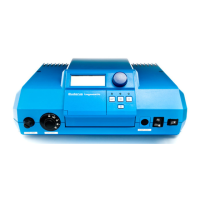What you should know about your heating system
2
Logamatic 2107 controls - We reserve the right to make any changes due to technical modifications.8
Fig. 1 shows the heating circuit of a pumped central
heating system: The burner (2) heats the water inside
the boiler (1). This heating water is propelled by the
pump (3) through the supply pipe (4) to the radiators (6).
The heating water flows through the radiators, and in
doing so, gives off some of its heat. The heating water
flows back to the boiler via the return pipe (7); there, the
circuit begins again.
The room temperature can be adjusted to your personal
needs using the thermostatic radiator valves (5), if
installed. All radiators are typically supplied at the same
supply temperature. The heat transferred to the room
thus depends only on the heating water flow rate, which
can be manipulated via the thermostatic radiator valves
or the pump speed.
What determines the heat demand of a room?
The heat demand of a room largely depends on the
following factors:
– the outdoor temperature
– the desired room temperature
– the type of construction/insulation of the building
– the wind factor
– solar irradiation
– the internal heat sources (open fireplace, occupants,
lamps, etc.)
– closed or open windows
– infiltration
You should take these factors into consideration to
achieve a comfortable room temperature.
Fig. 1 Pumped central heating design
Item 1: Boiler
Item 2: Burner
Item 3: Pump
Item 4: Supply line
Item 5: Thermostatic radiator valves (optional)
Item 6: Radiators
Item 7: Return line
Fig. 2 Influences on the room climate

